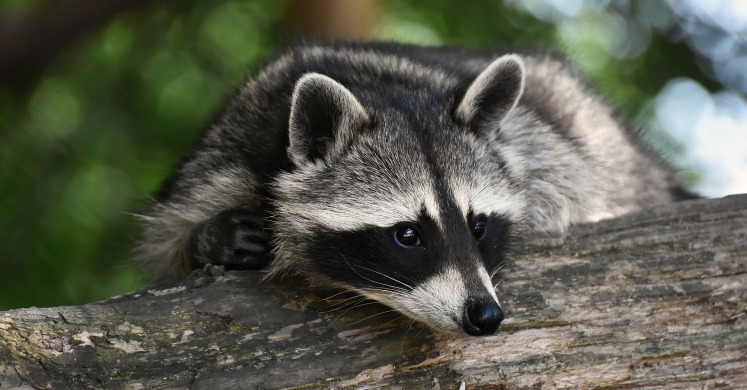Blog

#bioPGH Blog: Raccoon Latrines
 A resource of Biophilia: Pittsburgh, #bioPGH is a weekly blog and social media series that aims to encourage both children and adults to reconnect with nature and enjoy what each of our distinctive seasons has to offer.
A resource of Biophilia: Pittsburgh, #bioPGH is a weekly blog and social media series that aims to encourage both children and adults to reconnect with nature and enjoy what each of our distinctive seasons has to offer.
Communal pooping — not just for Ancient Romans!
This past weekend, I stumbled across a raccoon latrine at the base of a tree in Boyce Park (*see safety note later). What’s a latrine, one might ask? It’s a communal defecation location. In other words, a place where super poopers come to party, I mean potty. As one might guess about such a spot, the poo abounds…literally. In mounds. For raccoons, common latrine spots are on or around tree stumps, fallen logs, and at the base of trees, like this particular one; and the feces pieces at this site were all around the trunk, extending out around the roots, and scattered around the tree itself. Though such a messy site might seem surprising, latrines like this are fairly common for mammals, and a great deal of both information and parasites can be exchanged by the practice. Is that a reasonable trade-off for an animal? From a clean, hygienic distance, let’s dig into raccoon latrines a little, shall we?
The first question one might wonder about latrines, why do they exist at all? If you’re a wild animal with no public decency laws to follow, why not just poo when the urge strikes? Why seek a spot where other members of your species are already going? Certainly not all species use a communal site, but one big reason to do so is that it’s beneficial for community members to know what is happening with other individuals in the area. Depending on the species, feces hold a great deal of information about the breeding status, territory, mate defense, stressors, and space use in an area. Animals can leave their “messages,” which are full of hormones and individual scents that inform each other of what is happening in the area. Though it may be a surprising animal behavior, the practice of communal poop spots has been in use since at least the Triassic period 50-250 million years ago by large herbivores called dicynodonts (there were many species of this group of non-mammals, but for our purposes, picture a ten-foot tall rhino with no horns and short oral tusks).
That’s just a species-level consideration; on a community ecology level, latrines are noteworthy for a few different reasons. Raccoons in particular will often have feces that are laden with undigested or partially digested seeds. Gross truth be told, some other small mammals can take advantage of those seeds as a food source, which will ultimately disperse at least some of the seeds. Raccoon latrines also can change how other species will move through the area. Since these sites often spread roundworms, species vulnerable to that type of roundworm seem to instinctively avoid raccoon latrines while species who aren’t sickened by roundworms neither avoid nor seek out the latrines.
Here, I am going to pause to add an important note to all of this: raccoon latrines should generally be avoided or only approached with proper protective gear because of the potential for the aforementioned roundworm infections. Raccoons play host to a particularly nasty roundworm, Baylisascaris procyonis, which lives in the intestines but can embed itself into other tissue like muscles or nerves; and it is transmitted through feces. Out of sheer chance, we approached the latrine tree this past weekend, but as soon as we noted the surroundings, we quickly moved away and made sure our pups didn’t have chance to step in or lick (eek!) anything. Check out what the CDC and Humane Society have to say about raccoon latrine safety!
Well, I do hope you enjoyed this dive into the wonderful world of scat. We haven’t spent enough time on poo here on the blog, but there is so much to learn from it. Maybe hold your nose and be prepared for more!
Connecting to the Outdoors Tip: If you do spy a latrine, keep your distance for your own safety; but if you curious about what's happening out there, look into the possibilities a trail camera! Always be sure to get property owner permission, but trail cameras are a cool way to learn about wildlife!
Science – Raccoon ‘latrines' could have a hidden impact on ecosystems
Humane Society – Safe clean-up of racoon latrines
Photos: Public domain

